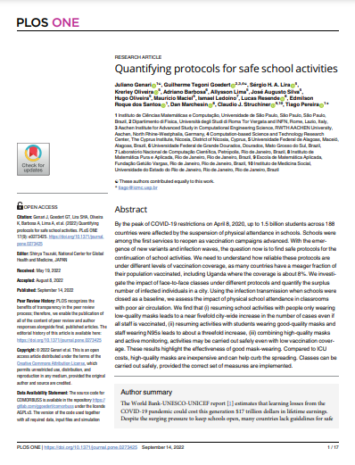Abstract
By the peak of COVID-19 restrictions on April 8, 2020, up to 1.5 billion students across 188 countries were affected by the suspension of physical attendance in schools. Schools were among the first services to reopen as vaccination campaigns advanced. With the emergence of new variants and infection waves, the question now is to find safe protocols for the continuation of school activities. We need to understand how reliable these protocols are under different levels of vaccination coverage, as many countries have a meager fraction of their population vaccinated, including Uganda where the coverage is about 8%. We investigate the impact of face-to-face classes under different protocols and quantify the surplus number of infected individuals in a city. Using the infection transmission when schools were closed as a baseline, we assess the impact of physical school attendance in classrooms with poor air circulation. We find that (i) resuming school activities with people only wearing low-quality masks leads to a near fivefold city-wide increase in the number of cases even if all staff is vaccinated, (ii) resuming activities with students wearing good-quality masks and staff wearing N95s leads to about a threefold increase, (iii) combining high-quality masks and active monitoring, activities may be carried out safely even with low vaccination coverage. These results highlight the effectiveness of good mask-wearing. Compared to ICU costs, high-quality masks are inexpensive and can help curb the spreading. Classes can be carried out safely, provided the correct set of measures are implemented.
Author summary
The World Bank-UNESCO-UNICEF report [1] estimates that learning losses from the COVID-19 pandemic could cost this generation $17 trillion dollars in lifetime earnings. Despite the surging pressure to keep schools open, many countries lack guidelines for safe school activities. Using the empirical transmission level for closed schools as a baseline, we quantify the impact of distinct non-pharmaceutical interventions (NPIs) on infection rates and different values of vaccine coverage. Strikingly, we show that classes can be kept safe, provided the correct wearing of good quality masks together with to the proper combination of other NPIs. In such scenarios, the increase in infections can be kept below 20% compared to suspending classes.


